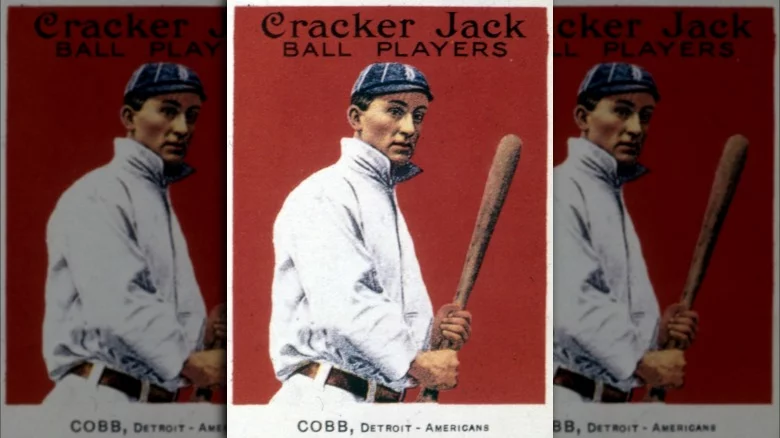
Welcome back to The Well—where we serve up the untold stories behind the iconic products that have shaped American culture. Today, we’re cracking open the history of Cracker Jack, the molasses-coated popcorn and peanut treat that’s been around since 1893. But don’t let its simple snack status fool you—Cracker Jack is packed with more than just peanuts (though, let’s be real, not that many peanuts). This little box holds a story of big business, baseball fame, and marketing genius.
Cracker Jack’s story starts with Frederick Rueckheim, a German immigrant who, in 1871, took his life savings—all $200 of it—and invested in a popcorn stand in Chicago. Within a few years, he and his brother Louis had perfected a recipe that added molasses to popcorn and peanuts, creating the sweet, crunchy treat we know today. But it wasn’t an overnight hit. Some say their first major attempt to introduce the snack at the 1893 World’s Fair was a flop. Yet, the Rueckheims persisted, tweaking their formula until they struck gold—or molasses, rather.

The name “Cracker Jack” allegedly came from a customer who tried the new mix and exclaimed, “That’s cracker jack!”—slang for something exceptional. By 1896, the Rueckheim brothers had trademarked the name, and Cracker Jack was on its way to becoming America’s favorite snack. But here’s the kicker: the real rise to fame happened entirely by accident. In 1908, the lyrics to “Take Me Out to the Ball Game” immortalized Cracker Jack in baseball lore. The line “Buy me some peanuts and Cracker Jack” was less of a brilliant marketing strategy and more of a rhyme-filler for songwriter Jack Norworth, who wasn’t even a baseball fan. Talk about luck.
And just like that, Cracker Jack became synonymous with America’s pastime. To capitalize on its newfound fame, the Rueckheim brothers introduced the first-ever prize inside the box in 1910—originally coupons for adults, but quickly replaced with toys like tin soldiers and paper dolls to keep kids coming back. By 1914, Cracker Jack had upped the ante, including collectible baseball cards in every box. Those cards? They’re now worth thousands to collectors, far outpacing the QR codes Cracker Jack uses today for “digital prizes.” Nostalgia never looked so valuable.
At its peak, Cracker Jack was the snack of choice, especially at ballparks. When Borden bought the company in 1964, and later Frito-Lay in 1997, the brand was pulling in millions. Today, Cracker Jack racks up around $60 million annually, largely thanks to its deep-rooted association with baseball. Sure, there have been some stumbles along the way—like the brief flirtation with Cracker Jack-flavored Pepsi in 2021, or the failed attempts to introduce flavors like “Buffalo Ranch” (yeah, that didn’t stick)—but the classic molasses popcorn and peanut combo remains untouchable.

And let’s not forget the iconic packaging. Cracker Jack boxes have donned red, white, and blue since World War I, a deliberate move by the Rueckheims to combat the anti-German sentiment sweeping the nation at the time. The boy in the sailor suit, “Sailor Jack,” has been gracing the box since 1918, modeled after Frederick Rueckheim’s grandson, who tragically passed away at a young age. Sailor Jack’s pup, Bingo, was based on Henry Eckstein’s dog (Eckstein being the brains behind Cracker Jack’s wax-sealed packaging that kept the snack fresh for cross-country travel).
So, what’s the secret behind Cracker Jack’s lasting appeal? Part nostalgia, part clever marketing, and a whole lot of ballpark tradition. While Cracker Jack’s product line may have expanded, crashed, and burned (looking at you, caffeinated popcorn), the classic remains king. Every time a stadium dares to replace it with Crunch 'N Munch, fans revolt. You don’t mess with the classics.
So next time you’re at the game, singing along to “Take Me Out to the Ball Game,” just remember: Cracker Jack isn’t just a snack. It’s history. It’s tradition. And it’s still packing a $60 million punch, one molasses-covered kernel at a time.